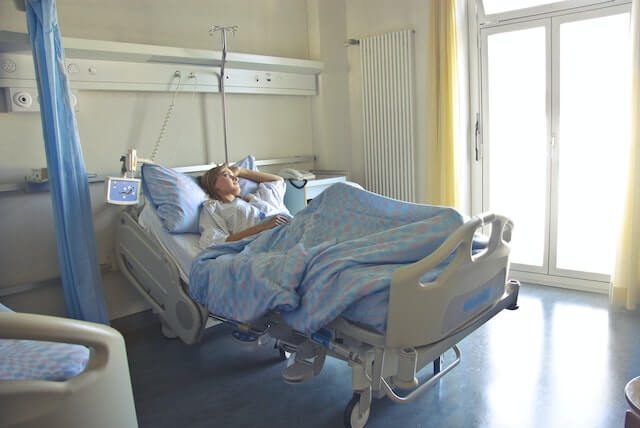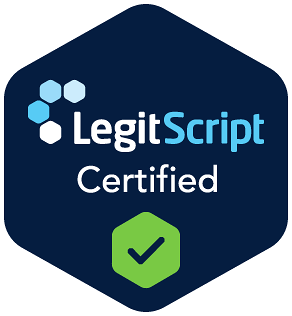Our dedication lies not just in treating symptoms but in addressing the root causes, offering a holistic approach that integrates the best of therapeutic practices with the warmth of community support.
The Dangers Of Rapid Detox

Rapid detox, also colloquially known as anesthesia-assisted opiate detox, combines sedation and medication to quickly and swiftly remove drugs and accompanying toxins from the body. While it may sound like a more streamlined method of detoxing from drugs and alcohol, its potentially dangerous status should not be ignored, especially for the uninitiated who already don’t understand the dichotomy between conventional detox vs rapid detox. Continued studies and findings on the subject have shown a medley of adverse effects and turmoil in patients.
The thought of a quick and easy fix sounds promising, but many who suffer from addiction understand that overcoming their struggles will require the utmost dedication to the lifelong goal of sobriety. It’s an ongoing journey, but when done right, the reward is worth the initial struggle.
An overview of Rapid Detox
Typically speaking, rapid detoxification will involve a licensed physician using an opioid antagonist, or opioid blocker like Naltrexone. Theoretically, Naltrexone forces the body into a withdrawal state, working to clear the opioid from that person’s system. The opioid blocker speeds up the withdrawal timeline from opioid drugs. In addition to Naltrexone, the presiding medical staff will also utilize general anesthesia to sedate the person, so that they aren’t imbued with the worst of the withdrawal symptoms.
People are led to believe that it’s a process that is easy, quick, and painless. Unfortunately, it’s never as simple as having a full-blown addiction, sleeping through withdrawal, and waking up void of cravings and dependence. Addiction is a disease that is more intricate than most realize. Around 2.5 million people ages 12 and older battled opioid addiction in 2015 alone, as reported by The American Society of Addiction Medicine (ASAM).
But for those who are deluded into thinking otherwise, they leave the detox facility under the guise that they have been cured.
What risks are associated with these programs?
Apart from the aforementioned risk of the false sense of security that rapid detox treatment programs offer, there are many other glaring concerns for anyone that gets this procedure.
– These programs fail to address aftercare issues. Once the patient exits the facility, they are left to fend for themselves.
– Side effects are not all uncommon and can include
● Anxiety and paranoia
● Psychosis
● Delirium
● Sporadic high body temperatures
● Nausea and vomiting
● Breathing abnormalities that can impair lung function
● Choking
● Heart failure
● Renal failure
● Coma
During treatment, the combined effects of the Naltrexone and anesthesia put immense stress on the body which contributes to some of the previously mentioned maladies. Even if the person makes it through without enduring complications, it is possible that they will deal with symptoms following the procedure. Despite the irony on how rapid detox treatment is pushed as a safe and effective method, nothing could be further from the truth. As a matter of fact, a majority of patients who underwent rapid detox will relapse to ease the physical and emotional stress, following treatment.
Ideal Detox Methods
Detox should always be viewed as an integral component in any addiction treatment program, but it’s not a standalone method of care that is capable of eradicating problems. Rapid detox treatment is not a “cure” by any stretch of the imagination. What should instead be utilized is a medical detox program coupled with an addiction treatment plan, so that long-term recovery and reduced rates of relapse are sustained.
Detox can be performed in either an inpatient or outpatient basis, and for opioid addiction, a medical detox program is ideal. They are usually offered as residential programs and medical personnel will execute around the clock supervision, for an average of 5-7 days. Medical detox often uses safer medications to work on specific symptoms of withdrawal (i.e, insomnia, depression, pain, and other irregularities). When the cravings and withdrawal symptoms stop, it allows patients to hone in on their long-term goals, remission, and recovery. Many have tested out the efficacy of supervised medical detox programs just to see how beneficial it can be. In one study, patients saw better 3, 6, and 12-month retention rates as opposed to those who received placebos or no medication.
With so much widespread attention being paid to drug and alcohol addiction, many addiction treatment centers like ours with Encore Outpatient Services, will help these individuals release the shackles of addiction, so that they can fully reclaim control of their lives. As we continue to treat and educate our current and prospective patients on these evidence-based approaches, not only will it shed more light on our programs, but it will hopefully get patients on a proper treatment plan that addresses each of their individual needs.
Reach Out to Encore Outpatient Services Today
If you or someone you know is struggling with the disease of addiction, contact our team of compassionate individuals today at 703.436.8158 ! We are always ready to help!
Let Us Support You On Your Recovery Journey!
Copyright 2025 Encore Outpatient Services | All Rights Reserved



